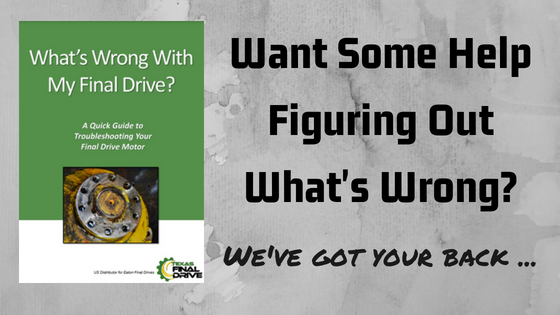The planetary gear system is key to helping your final drive motor generate the torque needed to move your equipment and transport heavy loads. When it goes out, everything literally comes to a grinding halt. Learn the signs of impending planetary gear failure!

Here are a few other Shop Talk Blog posts you might find of interest ...
- Planetary Gears and Final Drive Motors
- How to Troubleshoot Gear Oil Problems with Your Final Drive
- Very Real Dangers of Reactive Maintenance
Final Drive Planetary Gear Hubs
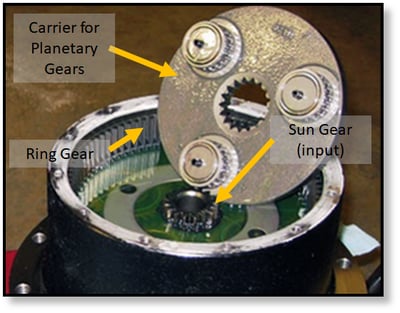
Your planetary gear hub will contain the following parts:
- Carrier for the planet gears
- One sun gear (the input gear)
- Two sets of three planet gears (which divide the speed and transmit torque to the output)
- A ring gear (which is stationary)
The input shaft has gear teeth, or splines, and serves as the sun gear in this planetary system. The three planet gears (which are all positioned equidistantly from each other) rotate about the sun gear.
And don't forget that there are bearings involved, also. Bearings eventually wear out, and if they aren't replaced in a timely manner then they will impact the rest of the system.
Visual Signs of Planetary Gear Wear
The gears in your planetary hub are transmitting an incredible amount of force, torque, and power. Just the forces that occur where the gear teeth mesh are extremely high, and normal wear and tear is to be expected.
If you open up your gear hub, here are the signs of wear to be on the look out for:
- Worn gear teeth that look more pointed that squared
- Bent gear teeth
- Cracking (this starts at the root of the gear teeth where the stress is the highest)
- Surface damage, such as pits, scuffing, or areas that look polished compared to their surroundings
The image below shows the gear teeth on a shaft as a good example of what to look for when it comes to tooth wear on your gears. These teeth are practically worn away and it is doubtful that they would still be able to mesh with anything.
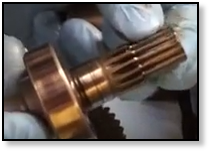
And keep in mind that any bits of metal that chip off of break off are going to stay within the gear system, causing the gear oil to be contamination and accelerating the wear.
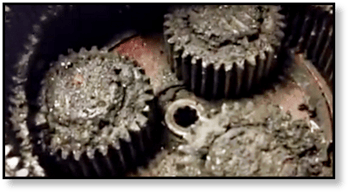
The gear hub shown above is in bad shape: not only has all the gear oil leaked out, but there is so much abrasive contamination in there that it is just a nightmare.
Other Signs of a Worn Out Gear Hub
You can't always open up your planetary hub when you suspect there are problems within. However, one of the symptoms you can pick up on are abnormal sounds and vibrations. While it's certainly true that your final drives are noisy and can vibrate, focus on the word abnormal. When new sounds or rattles develop, that is usually a sign that something within your drive has changed. And that something is often within the planetary gearbox.
Preventing Premature Failure
There are some things that you can do to make sure that your planetary gear system doesn't wear out sooner than it should. One of the most important things you can do is check and change the gear oil on a regular basis. Good lubrication is key to a system that runs efficiently and lasts for a long time. It's also important to keep your gear oil as free from contamination as you can, and that includes addressing any leaks that might be present.
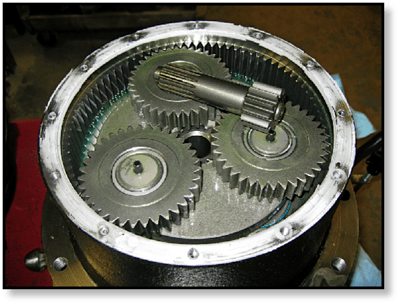
You should also take care when reassembling the gear system for your final drive motor: proper alignment can prevent premature wear of the gears. And finally, don't ignore new sounds or vibrations coming from your final drive.
Conclusion
The gear hub in your final drive is critical to transforming speed to torque, and because of that it has to deal with extremely high forces. It is important to know the signs of problems with your gear hub and how to prevent them from occurring.


